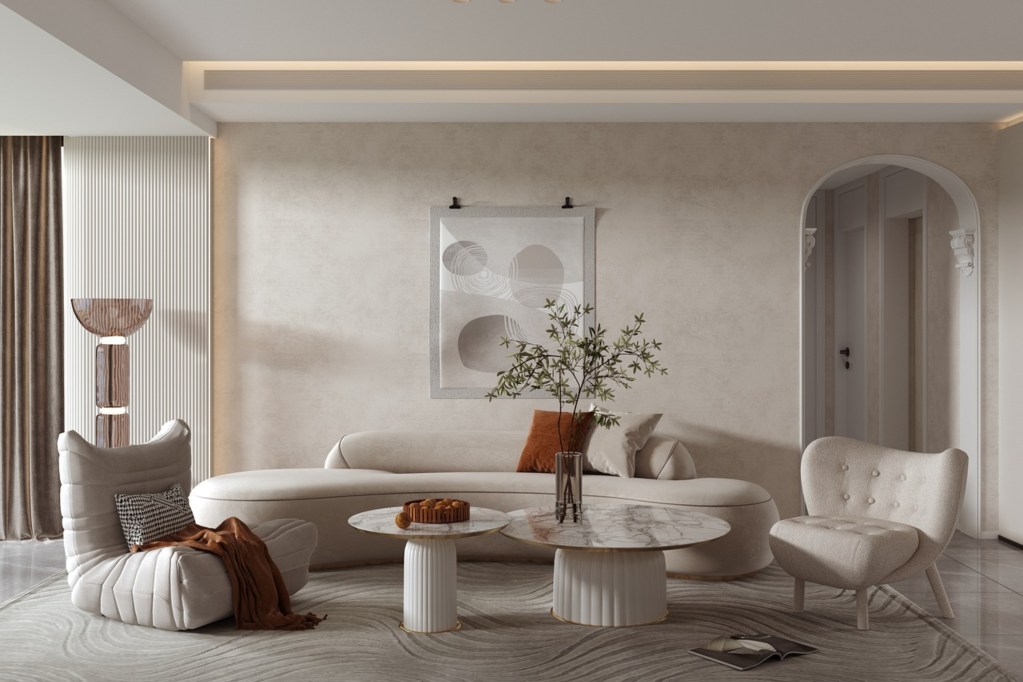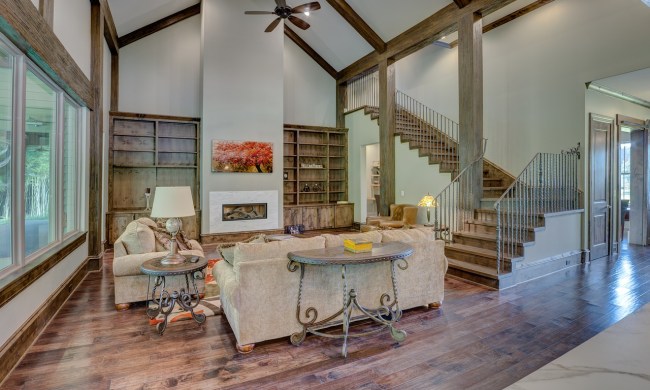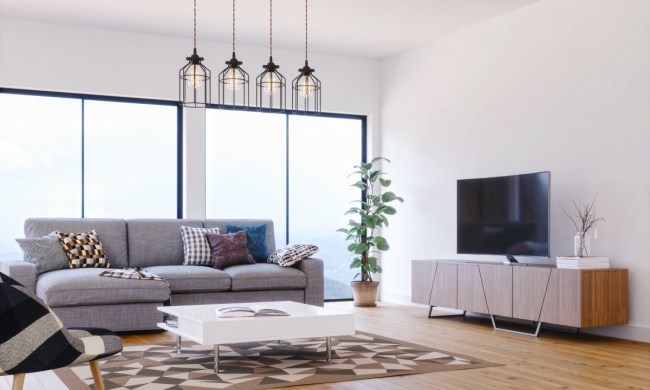Wabi sabi interiors honor the natural process of aging. They highlight imperfection and shine a light on rustic, weathered, and well-loved pieces. If you crave simplicity, authenticity, and comfort in your home, try these wabi sabi interior design tips to embrace an aesthetic rooted in cherishing organic and cherished pieces.
What is wabi sabi interior design?

Wabi sabi is a Japanese philosophy and way of life, much like the Danish concept of hygge or the Norwegian idea of friluftsliv. Wabi sabi originated as a concept where imperfection and impermanence in life are honored. This Japanese philosophy aims to value that which others may not. For example, a vase with a crack in it may appear imperfect, but it is still beautiful and can be repurposed and cherished in one’s life.
As an interior design style, wabi sabi has embraced natural beauty, raw forms, and environmentally conscious details. Raw and organic materials are valuable in this design style, while asymmetry and imperfection are highlighted rather than refined.
Another core facet of wabi sabi is the focus on simplicity. Less is more in this design style, and attention goes on well-loved, intentional pieces rather than mass-produced, new objects.
How to decorate using a wabi sabi aesthetic

If you’re interested in the wabi sabi design style, we have a few tips you can follow to achieve this look. Remember, wabi sabi is both an aesthetic and a way of life. As you design your space, be intentional about how you can capture the essence of wabi sabi in your everyday life.
Use a muted color palette
Wabi sabi design puts an emphasis on simplicity and asks us to find value in the minor details. Bold and grandiose hues aren’t often found in wabi sabi interiors, aside from in personal items we cherish. Rather, lean toward muted hues in neutral tones. Beige, cream, white, off-white, brown, tan, and gray give the space an earthy, organic vibe.
If you want to invite more color, lean into subtle sage green, terra-cotta, dusty rose, or slate blue. Opt for hues that have warm undertones, which bring more comfort to your home.
Opt for natural or matte textures
Natural materials reign supreme in wabi sabi interiors. You’ll want to avoid mass-produced and well-refined items. Consider adding an organically shaped raw wood coffee table. Add handmade pottery and ceramic pieces. Specifically, look for pieces that have indentations, imperfections, tool marks, or finger indents.
Handmade tiles, stone sinks, metal with a faded patina, dented or hammered metallics, unglazed pottery, plants, and stucco are other examples of organic and natural materials that you’ll find in wabi sabi interior design.
As you search for textiles, we recommend light, airy linen pieces that offer a natural feel. Organic fibers like bamboo, tweed, cotton, and wool are also fantastic choices for rugs, curtains, blankets, and pillows.
Function over form
Since wabi sabi favors simplicity, it’s understandable that a minimal touch is necessary to achieve the look. Focus on pieces for their function and purpose in your home before you begin adding clutter or decorations for appearances.
Each item should feel intentional. Wabi sabi also exudes an air of timeless pieces that are well cherished. A dented, chipped, or scratched coffee table adds character. A chipped teacup tells a story. A dented metal fruit bowl on the table proves the home is lived in.
Rounded shapes and soft edges
If you’re updating your existing furniture, choose pieces with rounded shapes and soft edges. Rounded sofas, papasan chairs, low-profile furniture, floor ottomans, and cushions are a must. Layer up your sofa and bed with pillows to create a soft look. Additionally, tossing blankets over larger furniture can help create a soothing, gentle aesthetic. Don’t worry about folding these linens. Wabi sabi is about imperfection.
Choose rounded kitchen cabinets or round dining and side tables, or add rounded archways to your home. Curves are a highlight of wabi sabi decor, inviting an air of tranquility and simplicity to the home.
Wall niches are a must-have
One unique feature of wabi sabi interior design is wall niches. Often asymmetrically and carved in odd shapes, wall niches can be found in nearly any room. A long, roughly cut wall niche in the bedroom can replace a headboard or side table.
Wall niches in the bathroom and shower offer utility and function as storage shelves. In the living room, a couple of wall niches can hold pottery and baskets for aesthetic storage.
Aim for asymmetry
One of the best tips for styling a wabi sabi room is to opt for asymmetry. Try to avoid balancing the room or adding aligned pieces. Asymmetry emphasizes the imperfection that wabi sabi intends to highlight and showcase. Don’t fret over blank walls or unusually sized artwork. Mismatched details, layered rugs, and uneven wall decor are striking features in wabi sabi homes.
Wabi sabi vs. Japandi interiors

Japandi design blends Japanese and Scandinavian interior details to create a crisp, functional, and minimal aesthetic. Alternatively, wabi sabi design focuses on natural materials and an organic, imperfect look. You may find clean lines, stark color palettes, and refined materials in a Japandi design, while a wabi sabi interior will showcase raw materials, handmade pieces, and warm hues.
Both wabi sabi and Japandi designs originate in some capacity from Japanese culture. Thus, they bring details like minimalism, intentionality, and simplicity into the home. However, the two styles differ in their function, purpose, and general aesthetic.
Wabi sabi interiors are warm, comforting spaces that provide an air of honesty and authenticity. They highlight imperfection and impermanence, honoring natural aging and raw materials. Try out these design tips to bring this way of life into your space.




